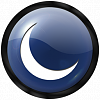How to Create a Sleep Shortcut on the Desktop in Vista
This will show you how to create a Sleep shortcut used to put your computer into sleep (not hibernate) mode when clicked on.
If you would like to place this shortcut in Quick Launch, then see Option Three in this link for how: How to Use Quick Launch in Vista
If you would like to create a keyboard shortcut for this shortcut, then see: How to Create a Keyboard Shortcut for a Program in Vista
This shortcut will perform the same action set for the Start Menu power button when pressed. You will need to make sure that the Start Menu power button is set for Sleep if you want this shortcut to put your computer to sleep when used. For how, see: How to Change the Power Button Settings for the Start Menu and Case in Vista
Here's How:
1. Click on the download button below to download the Sleep Shortcut.zip file.
2. Click on Save and save it to the Desktop.
3. Right click on the Sleep Shortcut.zip (on desktop) and click on Open.
4. Click on Allow for UAC prompt.
5. Select and extract both the Sleep shortcut and Sleep Shortcut Folder to the desktop.
6. Open a Windows Explorer window and navigate to C:\Program Files.
NOTE: Not in the C:\Programs Files (x86) folder for 64 bit Vista users.
7. Right click on the Sleep Shortcut folder (on desktop) and click Cut, then right click on a empty space in the Windows Explorer window (step 6) and click Paste.
 Note
Note
The Sleep Shortcut folder has the Sleep.vbs scipt file in it. This is the contents of this vbs script:
Code:
Dim objShell[/INDENT][/INDENT]
[INDENT][INDENT]Set objShell = CreateObject("Shell.Application")[/INDENT][/INDENT]
[INDENT][INDENT]objShell.ShutdownWindows[/INDENT][/INDENT]
[INDENT][INDENT]set objShell = nothing[/INDENT][/INDENT]
[INDENT][INDENT]Set WshShell = CreateObject("WScript.Shell")[/INDENT][/INDENT]
[INDENT][INDENT]WshShell.SendKeys "{Enter}"[/INDENT][/INDENT]
[INDENT][INDENT]Set WshShell = Nothing
A) Click on Continue in the Destination Folder Access Denied prompt.
B) Click on Continue in the UAC Prompt.
8. Put the Sleep shortcut (on desktop) where you would like for easy use. (See the NOTE at the top of the tutorial)
NOTE: If you would like to use a icon of your own instead, then see: How to Change a Shortcut Folder or File Icon in Vista for how.
9. You can now delete the Sleep Shortcut.zip (on desktop) file if you like.
This shortcut will perform the same action set for the Start Menu power button when pressed. You will need to make sure that the Start Menu power button is set for Sleep if you want this shortcut to put your computer to sleep when used. For how, see: How to Change the Power Button Settings for the Start Menu and Case in Vista
That's it,Shawn
CREDIT TO: sidney1st for providing a better way to do this with a VBS script.
Thank you.
Related Tutorials
- How to Create a Log Off Shortcut in Vista
- How to Create a Lock Computer Shortcut in Vista
- How to Create a Shutdown Computer Shortcut in Vista
- How to Shutdown, Restart, Switch User, Log Off, Sleep, or Lock Vista from the Keyboard
- How to Create a Restart Computer Shortcut in Vista
- How to Create a Abort Shortcut in Vista
- How to Create a Hibernate Shortcut in Vista
- How to Change the Power Button Settings for the Start Menu and Case in Vista
- How to Create a Power Options Shortcut in Vista
- How to Restore or Disable Hibernation in Vista
- How to Changed the Return to Sleep Timeout for a Unattended Wake Up in Vista
- How to Create a Keyboard Shortcut for a Program in Vista
Attachments
Last edited by a moderator:






